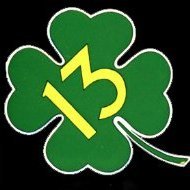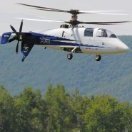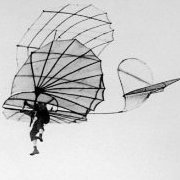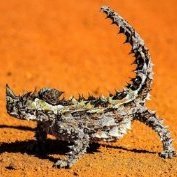Leaderboard
Popular Content
Showing content with the highest reputation on 01/28/2021 in all areas
-
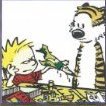
Tamiya F-4B Phantom Conversion (Finished! 25 Sep)
jgrease and 7 others reacted to easixpedro for a topic
After seeing multiple threads lamenting the lack of a 1/32 B model Phantom, I thought I'd start a WIP to show folks how to do it. There’s several ways to tackle it, none as daunting as it seems. I did a conversion back in the 2005 timeframe using the Tamiya F-4C kit. This go round, I’ll be using the F-4J kit, as I tend to think it’ll be easier in the long run. Either way, you’ll need sprues from both kits to do it, plus some cutting of plastic to get the thin wing of the B variant. If you go with the F-4C kit, you get the IR fairing and the correct burner cans. Everything else required for the Navy variant, you’ll have to source. Most all of it is on Sprue J that comes with the F-4J kit. These are the things I didn’t feel like making that I’d done previously. Not insurmountable mind you, you’ll just be working to convert the pylons and make the catapult attachment points, find a centerline drop tank etc. Sometimes you’ll be lucky enough to find sprues on Ebay, but I’ve never seen this sprue for sale. You’ll also need Sprue H, (above on the left) which is the USN cockpit with the flat side walls. Obviously for a J, but I’ll show you the differences between the two. Won’t be 100 percent, but we’ll get it close enough. Plus there’ll be figures to cover up some of the detail (or lack thereof). I purchased the F-4J Marine boxing, which gives me all the stuff required for Navy version, plus the outboard pylons, which I thought was key. On my previous build, I'd just sawed off the portion from the drop tanks and fettled about to make them that way. Off the top of my head, here’s the thing’s I’ll have to purchase/make. -IR sensor on the nose -Short J79 engine nozzles -Thin wheels for the main mounts I can buy the last 2 at Sprue Brothers, as they’re available/in stock. GT Resin has a conversion kit 32-059, but Sprue Brothers has been out of stock for some time. That set has everything you’d need... Ejection seats are going to be something I’ll tackle when the time comes. Early variants used the Martin Baker Mk H-5. The kit comes with the H-7 variant. The major difference is the horseshoe shaped parachute pack at the top of the seat. Earlier seats had a soft pack encased in a metal shroud. The H-7 variant is fiberglass (it also added rockets underneath to give the seat a 0 airspeed capability). Most, if not all J’s came off the line with the new seat. F-4Bs were retrofitted and complete by 1970~ish. If you want to do an early Phantom, you’ve got to change the seats. Harold at AMS resin has some brilliant seats, but they’re currently out of stock… maybe I’ll convert the kit seats. Again, we’ll cross that bridge when I get there. The Mk H-5 variant is also very similar to that used in the A-6A as well as the F-8s. I might see if I can score some that way and just ignore the minor differences. (Again, the GT Resin conversion kit has all of this) Other things to think about: Look at the airframe and pictures of the aircraft you want to model. There were LOTS of changes early in Vietnam as losses mounted and they figured out what worked and what didn't. One of the other reasons I picked the J boxing is the addition of all the antennas. Easy enough to make from sprue, but easier when they’re in the kit! Lots of changes to the stabilator as well. The J boxing comes w/ what I wanted—the F-4C boxing didn’t. Of course there’s not a lot of markings for F-4Bs available in 1/32, although AOA has recently come out w/ Marine variants. Plus side is that lots of squadron markings didn’t change much after converting from F-4B’s to J’s. Just have to find the ones you’d like and go forward. For me, I’m leaning heavily towards either VF-213 or VF-114. They flew from USS Kitty Hawk throughout the war. I love the Aardvarks audacious Orange markings. VF-213 was almost as bad in bright red… Eons ago, CAM did markings for both squadrons as the F-4J. If I can score some of those, I’ll just use the stuff to make them into a B. Of course, I can’t let a “simple” conversion be too simple. I’ll make a scene with it. Either trapping or launching. My previous B conversion is trapping, so I know I can do it. Or like this. This was in 1/48th with the archaic monogram F-4C kit. Learned a lot, so know it’s achievable too. Unfortunately this model didn’t survive the last Navy move. I’d love to recreate it though. That being said, I’ve already started marking out where to make the cuts on the wings, both upper and lower. On my previous build, I’d sanded those lower areas off. Frankly it obliterated most of that wonderful detail. I might try cutting it this time—PE razor saws weren’t a thing yet and I was pretty ham-fisted. For the uppers, you can see how much of the wing will come off. Because I’ll have to drop both the leading and trailing edge flaps, I’ll cut and replace this section prior to that as it becomes fragile quick! Truth in advertising: Sometimes I have the attention span of a gnat when it comes to building. I’ll likely bounce back and forth between my Prowler and this as I see fit. May lead to some long periods in between as I pick and choose. Hopefully more soon! -Peter8 points -

Italeri CF-104 Starfighter "Kicked up a Notch": KLP Publishing eBook now Available!
KiwiZac and 7 others reacted to chuck540z3 for a topic
Some good news for me, since my F-5E build is now in the upcoming March issue of FineScale Modeler, with a kind of crappy screen shot below which is the best I can do. It was probably one of the worst kits I've ever built, so if I can get it looking fairly decent, this build should look pretty good as well when finished. Through lots of trial and error, I think I learned a lot about spraying a clean blemish free coat of gloss black lacquer on this Tiger, which I will need as a base coat for several different shades of Alclad metallic lacquers on this CF-104. Time will tell if I can match or improve this finish. Cheers, Chuck8 points -

TA-7C / EA-7L "Twosair" - Trumpeter conversion
chukw and 6 others reacted to Starfighter for a topic
I am weak. Very weak. Whilst waiting for the aftermarket canopies for Scooby (more on that very soon!), a very old itch became too intense not to scratch it (see what I did there? :D). Just as a little introduction to this project - Belgian master modeller and friend of mine Patrick Bouclans built a stunning 1/32nd scale EA-7L many moons ago - must have been around 2005 or 2006, shortly after the Trumpeter A-7 hit the market. This model was and still is an absolute gem and it was clear for me ever since that, I wanted to build a Twosair myself one day. Patrick's EA-7L - mindboggingly beautiful. A classic scratchbuilt conversion. Similarly to most of my other "one day I want to build" projects, I started collecting references, aftermarket parts and all kinds of materials I needed a few years ago. Last week, without any warning, it made "click" in my head and I had to build a Twosair. Not one day, but right now. Strange, but that's pretty much how my little scale modelling brain works... The initial plan was to use the Zcato conversion for the intake and windscreen and to build the fuselage from scratch, but it seems all that fiddling around with 3D printing makes you lazy... me at least. So I went looking for a suitable 3D model of a Twosader and actually found one - a rather good looking Flight Simulator model. The price was reduced, so I bought it to find out what could be done with it. Long story short, I was able to convert the file, make it printable and to print the parts required for the conversion. A few cuts and a bit of sanding later, and the fuselage looked like this: Note the "excellent" fit of the Aires wheel bays and avionics bays... they are just a tad short. Well.. at least they are nicely detailed. I'll deal with the gaps later. Here's how the entire fuselage looks like. The fuselage extension was drawn by myself. As 3D files intended for games are low poly files, the surface finish is very rough and needs a lot of sanding. The nose area fits the Trumpeter fuselage pretty well, but the 3D fuselage was too narrow at the rear. I have split it and will modify the shape by hand. No Zacto intake needed - just a bit of sanding. I am currently waiting for two Avionix cockpits; once they have been modified to fit the fuselage, I can ho ahead with sanding, filling and scribing. Then I'll have to decide whether I'm going to build a VAQ-34 EA-7L or a VAQ-33 TA-7C. The EA-7L offers more interesting loadouts and a nice red star on the fin whilst the TA-7C would be a cool addition to my VAQ-33 history project... and they were beautifully weathered. We will see! As usual, don't expect this to be a "quick" project. I may switch forth and back between my ongoing builds; my current priority is to finish the QF-4S first and I have to wait for the Corsair cockpits anyway. Stay tuned!7 points -

USS Franklin - NX-326 from Star Trek Beyond - 1/350 Moebius
Rockie Yarwood and 6 others reacted to Brett M for a topic
So, something completely different than LSP's. I've had this one on the shelf for a few years and it's time to get it done. So, here's to building the USS Franklin from the last Star Trek Kelvin timeline movie, Beyond! I picked up a few aftermarket items, listed below Tenacontrols USS Franklin Paragraphix USS Franklin PE JT Graphics photon launcher Green Strawberry Franklin bridge and accessories I haven't needed to do any soldering in years, so this is something really new for me (again). Thankfully, I don't seem to have forgotten everything! I started off with getting the bussard collectors ready for the nacelles as well as the rear.....bulb? I of course forgot to take pictures before I started tearing into everything, so you get the messy photos. Surprisingly, reading through wiring instructions, combined with soldering, installing and fitting parts as I go......my work station explodes! Just barely getting going.....feel free to join in and watch.7 points -
That looks fantastic! Exactly what I'm trying to achieve, and i think yours probably looks more in scale than mine. Dust it off and get her across the line Thabks very much guys, I appreciate the support! This week has been a busy one, so not much bench time. A weekend visiting friends in Texas included some time spent aviating, backseating in this 1929 Curtiss Robin. Good Times! I got a few little things done on the G50, first up was a bit if tail surgery. The kit gives the option of long or short tail fairings, the machine im building had the short tail, so out with the saw. A rough cut, then filed to the appropriate panel line. Here are the two lengths compared The fit was surprisingly good. I started experimenting with the structure inside the cowling. Using metal tape, I ran a rivet tool along the tape and glued strips inside the cowl. With the engine in place, little will be seen. Thanks for watching!7 points
-
Part 6 - THE EMPENNAGE I had built a couple of Tiger Moth kits in smaller scales, including John Adams lovely 1/48th Aeroclub one, before I became "intimately acquainted" with the real thing. So when I had the golden opportunity to crawl all over one, or "Fill your boots" as Annabel (one of the pilots) said, I was surprised, nay even shocked, when I saw this: I never realised that there were those yawning gaps between the fin and the fuselage, and the rudder and the fin. Equally: ......underneath the horizontal tailplane and fuselage! Bit of a game changer when it comes to modelling accuracy and not one that is often appreciated. So I'm interested to see how it's dealt with in the kits. Again, big variations in what's supplied: It's no surprise to see that Silver Wings is the most detailed with separate elevators, rudder and fin, the vertical pillar which is the hinge point for the rudder, a beautifully detailed tail-skid and its separate spring. In the picture above I haven't shown the control horns for the rudder and elevators because they are so small and delicate - in fact I didn't even know they were supplied initially. To be honest I'm not sure how they would cope with having rigging elastic attached, the tension could easily dislodge them? I made some from brass!! Talking of which, the Revell offering. As might be expected, fairly basic and control horns which in scale would probably be about 50mm thick! Whereas the Silver Wings kit incorporates the actual structure with its gaps shown in the first photos by the use of spacers, the Revell one doesn't....it's a solid affair. This is the Silver Wings kit in progress: Once again, ICM are somewhere between the two - detailed (they have even modelled the square-shaped "stops" at the bottom of the rudder for the tail skid) yes, but a simple assembly. The control horns are much better than the Revell ones and manageable to fit. However I have a major issue with where ICM would have you fit the rudder control horns, so high as to be nearly level with the top of the fin. I clearly haven't seen the Tiger Moth which ICM used for their patterns, but let's say it's a surprise! Anti-spin strakes (ugly things!): The Tiger Moth isn't inherently unstable nor a "vicious" aeroplane to fly, until that is the powers-that-be started asking more of it than it could adequately cope with.....it wasn't designed as a bomber. So again the question of centre of gravity became an issue, and those added strakes were the answer. There is the option to make each without the strakes, what’s supplied is a one piece affair with Revell and ICM but independently moulded ones for the Silver Wings kit. The picture below is a good one to illustrate an issue that nobody covers - look at the leading edge of the horizontal stabiliser - an "eyelet" through which the upper elevator cables run. Without this the cable would of course rub against and ultimately cut through the stabiliser. There is another always missed item, though both Silver Wings and ICM make a token gesture towards its existence: There's a metal fairing which covers the front of the fin, extends forward and wraps down the side of the fuselage. The forward corner of the rudder also has a metal cap which is moulded both by Silver Wings and ICM. I think that's about it, just a little more eye-candy to finish with! Moving onto the landing gear in Part 7!6 points
-
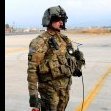
HH-60G Pavehawk Kitty Hawk 1/35 DONE!!
Pete Fleischmann and 5 others reacted to Hawkwrench for a topic
Pete, Why don't you submit all of this beautiful build to KLP publishing so they can create an ebook of this build??? Pleeeeease! Tim6 points -
PZL P.6 1931 from scratch scale 1/32
blackbetty and 4 others reacted to Marcin_Matejko for a topic
Dziękuję Thank you And a family photo PZL 11 III Cleveland 1932 and PZL P6 Cleveland 19315 points -

Italeri CF-104 Starfighter "Kicked up a Notch": KLP Publishing eBook now Available!
jgrease and 4 others reacted to chuck540z3 for a topic
Thanks Alex. Like most print magazines, FineScale Modeler has undergone a lot of new changes lately and with the demise of Scale Auto magazine in October 2020, car subjects have now migrated over to FSM. With my focus on aircraft models and only aircraft, my interest in FSM has dwindled as more Star Wars subjects, Tanks, Figurines and now Cars fill the pages of the latest issues, including the March issue. Nothing wrong with this, since I believe most modelers are more well rounded in their modeling interests than me and FSM needs to cater to the widest range of modeling subjects in order to survive. FSM has been very good to me over the years and I wish them nothing but success in a very tough genre. This is why I have migrated my last two models (Kitty Hawk T-6/Harvard and Special Hobby Tempest Mk V) over to KLP Publishing instead. As an aircraft modeler and professional writer, LSP Kevin understands what we want to see and how to explain it clearly, so rather than sift through pages and pages of one of my typical build threads full of background noise, there will be an eBook guide that will be easy to follow and read. I'm really looking forward to the first one on the Tempest! Cheers, Chuck5 points -
Just taken delivery of 2 sets of British 1,000lb GP bombs from Videoaviation today (6 retard, 6 freefall) from Italy. I have 3 words to describe them: out... stand... ing! They are cast in resin (for some reason I was expecting 3D printing) beautifully moulded in two main halves: bomb and appropriate tail with scale fins; the pouring stubs convieiently in the centre of the join area making removal / clean-up straightforward. They come with separate lugs to facilitate different bomb crutches, arming vanes and stencil marking decals. The profile of bomb and tails look spot-on If you are planning going conventional then this is the way to go! And at a reasonable price (compared with some resin i have recently purchased). Well pleased Many thanks Maurizio Rich4 points
-
Yes, don't do it again or we'll send the boys round!4 points
-

TA-7C / EA-7L "Twosair" - Trumpeter conversion
chukw and 3 others reacted to Starfighter for a topic
Oh, there is a tiny littly update as well. All manufacturers do the extremely ugly (yet typical) tractor front tyres which I don't like at all. Made a quick drawing of the also used "smooth" front tyres to fit the Reskit rims.4 points -
Rick Griewski, the man, the myth, the legend, sent me this! This is a recent photo of my receiving the gift -> Loud shout out to Rick. THANKS!!!! Thanks also to LSP staff and membership who put in effort soaked in kindness. If only the world was more like LSP. Life would improve for everyone. Thanks, Rick. Thanks, LSP.4 points
-
I built this kit quite a few years ago now, and I'd generally recommend avoiding it if you can. Kev4 points
-
Well some progress on basic airframe construction today. Sometimes after pondering for a few days I just decide to cut plastic. Today was one of those days. One of the biggest hurdles was how am I going to attach the wings? They need to be level and well attached. I decided to use wooden paint stirring sticks from the hardware store. They are straight, rigid and lightweight. I determined where the wing should sit, red dashed line, and then cut some openings that would accept the sticks. Everything is just dry fitted for now but you can get a sense of what the final shape will be. I really need to finish my other projects so I have room to work on this beastie on my desk. Dan4 points
-
Yes, I am. A FM-2 conversion of the -4. Researching the new Master Details Wildcat firewall as we speak.3 points
-
My kit was missing one of the little stub antennas so I built a replacement for it. This bird had a lot of little antennas, pitot tubes, etc decorating it. In addition to the one I had to make, I did the four antenna standoffs on the underside out of 0.5 mm brass rod, because I was sure that the tiny styrene pieces that came in the kit would never survive.3 points
-
Welcome to the forum! I LOVE DVIIs!! I guess it all depends on what level of detail and accuracy you are hoping for, and what kind of materials you want to use. At that scale, you could model every little whiz and bang!! I scratch built a DVII skeleton few years back in 1/16 scale, but my goal was to build it on the cheap out of stuff I already had on hand, specifically balsa, paper, and string - no plastic at all (I did have to cheat and buy some rubber O-rings for tires). I started with a really good set of digital plans, printed them out at the right scale, and started cutting parts. Total accuracy was not my goal, it was just to have some fun and see if I could do it! I probably had more fun doing that model than any in a long time. If you'd like to take a look at it, there is a link in my signature below. If you are shooting for total accuracy/realism, and you want to show off the skeleton/innards of the plane (and you have a big budget), I'd probably lean toward a combination of 3D printed parts, brass tubing, balsa or spruce, thin sheet metal, and actual cloth (like the R/C guys use) or maybe vellum. You'll need to learn to solder if you don't already know how! If you are going to totally close it up so you can't see any of that internal work, then maybe mostly wood for structure, with some 3D printed parts more accurate materials where they will show. If you want to scratch the entire thing yourself, then plastic, wood, metal, and cloth or vellum. You might look around on Shapeways or other online 3D printing sites for parts you can order in your scale. What you can't get there, you'd have to build. If you dive into this, I'd sure love to follow along - sounds fun!! Tim3 points
-
I'm pleased to say that my Compass decals arrived safely from Hawkeye today: I also purchased some Compass decals for a planned A300 build based on the Airfix kit, but that will be some time down the track, as some conversion work will be necessary for that project. As for this build, the only progress I've made is to glue the tail cone together and attach it to the model, along with some judicious filling around some conspicuous joins: I'm at a bit of a loss regarding what colours to use for the livery, however. The decal instructions give the upper colour as 'dark grey-blue', while the lower fuselage is given as 'aircraft grey'. The wings and tailplanes are simply described as 'light grey'. Not very helpful! Kev3 points
-

HH-60G Pavehawk Kitty Hawk 1/35 DONE!!
Pete Fleischmann and 2 others reacted to LSP_Kevin for a topic
Well, that's really up to Pete! Kev3 points -
HH-60G Pavehawk Kitty Hawk 1/35 DONE!!
Pete Fleischmann and 2 others reacted to Landrotten Highlander for a topic
second that I see someone posted before me, so make that: third that3 points -
Who’s into R/C things?
D Bellis and 2 others reacted to Chad Veich for a topic
RC scale builder here, primarily of second world war types but not strictly so. I am most proud of my 1/8th scale -5K Hellcat which I scratch built from my own plans. Flies fantastic and I've had some contest success with it as well. I am still working on my weathering skills and envy much of the work I've seen on this site in that regard.3 points -
Small update .....I have been working on the intakes. It has been suggested to attach these to the fuselage sides prior to gluing the fuselage halves together vs Kitty Hawks instructions that have you do the opposite. This will be in a desert scheme from Desert Storm, hence the color on the intake spike(?) ...not sure of the proper nomenclature for the pointy thing ! KH provides intake doors that absolutely do not fit. I am plugging them with some sheet styrene pieces and puttied the back side to give them some support from the back. Will have to put a very thin layer of putty on the outside and do some careful sanding. KH also provides a glass window that covers the searchlight. No surprise, it fits like crap. I used my Dremel to thin the inside area and now the clear window fits much nicer. I have a searchlight assembly to put behind the window. That's all for now Scott3 points
-
1/32 HK Models Lancaster B Mk.I Nose Art Kit RF128/ QB-V Victorious Virgin.
Greg W and 2 others reacted to monthebiff for a topic
After more dry fits I was finding the floor fit to the port fuselage half not so good and realised it was the pilots instrument panel causing the problem. So off it came and any damage repaired. The floor assembly fits really nicely in to the fuselage now so nasty surprises once paint is on! Bomb sight computer added Think I have a plan now for the camera bracketry installation so it can be installed in place and then the camera fitted after painting. Regards. Andy3 points -

1/32 Revell Me 262B-1/U1 Nachtjager
Pastor John and 2 others reacted to Thunnus for a topic
The glue securing the landing gear legs have been given a couple of days to cure so I can now put the wheels on. Since I have sanded flat spots on the tires to depict weight compressing the rubber, I have to make sure that the tires are rotated to put the flat spots in the right position. A quick-setting two-part epoxy such as JB Kwik Weld works well for situations like this as they give me a 2-5 minutes to make adjustments before the glue starts to harden. Mixing equal parts of the light and dark colored components yields a dark brown goop with the consistency of toothpaste. With the wheels attached with JB Kwik Weld, I alternate the model between the jig and a flat tabletop to ensure that the tires' flat spots are in the right place. And now the model can sit on its own legs for the first time!3 points -

1/32 Avro 504 scratchbuild
John Everett and 2 others reacted to kensar for a topic
Thanks, goose. I finally got more paint and went at the wings. Got them and the fuselage detailed and put together. It's coming together now, with the larger assemblies being joined.3 points -
Work on this paused for more paint to arrive, but I have put together one more detail - the cockpit coaming. Heated and bent some styrene and added the rear part. Add some sewing thread. Paint and put it together. Until next time...3 points
-
Hi JolleyRoger, I'm afraid the riveting is progressing rather slowly. I haven't stopped totally however, and can at least show you some work on the airbrakes... Theses are the Aires replacements for the Kinetic kit, which unsurprisingly don't fit the Hasegawa fuselage. So, I chopped out the kit bay and set to correcting it with styrene. The Sabres airbrakes are mounted at quite an angle which neither kit replicates. You can see how I have cut the openings at an angle to achieve this limp-eared look when they are extended. Lining the sides of the bay creates the lip for the airbrake opening that is otherwise missing, and would result in the brake disappearing into the bay when closing, and crushing the plumbing! Now I was able to do some of this very plumbing on a nice clean styrene canvas. Using bits from the original kit airbrakes, some Eduard brass and the Aires actuators I now have brakes that look a little more like they should. The hydraulic jack is attached to a substantial mounting on the back wall of the bay, and plumbed with pretty thick hoses. You might be able to make out the angle of the airbrake in this view. And here it is as a complete unit. You may also have noticed some rivets for the vertical lines of the fuselage formers. There are still many more required, not to mention the confusing latticework of the horizontal stringers and other structures that make up the Sabre's unique skin. Lots of fun to be had! Hopefully the next update won't take another two months. Sean3 points
-
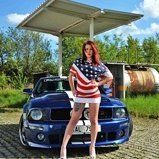
Bf 109G-10/R3, W.Nr.130297 10./JG 51
109 and one other reacted to Miloslav1956 for a topic
Hasegawa 1/32 model Eagle cals, Aires wheels, exhaust & cockpit, AMUR propeller & scoop, painting mask homemade, all colours MRP. reference:https://www.forcedlandingcollection.se/LWe/LW136-Bf109.html2 points -
Don't feel bad at all about that, Kev. Just a few nights ago I was looking for some specific decals (which I seem to have all over the place), and discovered a whole mess of brand new P.E. sets that I have no recollection at all of ever buying, yet here they are. It was sort of like Christmas.2 points
-
Here's mine (sorry about the cheesy photo), on the contest table at a local SLHA show, roughly around 1995 or so. The model actually did pretty well for me in several competitions. In fact, Scott Van Aken gave me grief over dragging it to every show in the multi-state region, which I thought was pretty funny, but I wanted to get the best mileage from it that I could. I was just then really getting into the "monkey see, monkey do" method of highlighting every single panel line, and looking back, am not too thrilled with my hammer like approach, but it is what it was.2 points
-
Based on the photo it looks like good ol USN Navy Blue would not be far off for the top. For very light grays on airliners I usually just use Boeing gray - MRP has it under that name and Mr Color has it as # 338, I believe. For those undersides, maybe Medium Gull Gray? Or just mix black and white until you get a shade that looks to your eye like the photo...2 points
-
It's a good point Guy, and not one for which I have a ready answer! I have a feeling that they could be areas where if there is a need, access can be made to the cabling etc within the wing/tailplane. Cutting into fabric anywhere else will lead to complicated repairs but within the reinforced circle any tears or rips would be limited. I'll investigate further.....the Haynes book may tell me!2 points
-
I've taken a little detour to build a propliner (taking a break from detailing before I tackle the landing gear and gun bays on the Mustang). But here's a bit of progress: Horizontal stabilizers are painted with Alclad Aluminum and Alclad Duraluminum (over Mr Color Gloss Black) to lend a little bit of color variation. Rudder (aluminum-doped fabric) painted with Alclad Semi-Matte Aluminum over gray Mr Surfacer 1200: I believe the trim tab is actually skinned with metal so I'll probably need to give that a quick polish and spray it with Duraluminum....2 points
-
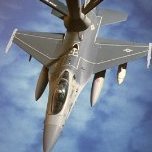
TA-7C / EA-7L "Twosair" - Trumpeter conversion
Derek B and one other reacted to Rainer Hoffmann for a topic
Glad you are weak, Ben. Otherwise we wouldn't see this build unfolding. Great subject! Rainer2 points -

Italeri CF-104 Starfighter "Kicked up a Notch": KLP Publishing eBook now Available!
Dadeo911 and one other reacted to Hawkwrench for a topic
Kev, try talking Pete into making an ebook for his HH-60G build! I know I'd buy a copy! Tim2 points -
Something I've come to realize, is what makes sense to you and the rest of us modelers, doesn't make sense to the kit makers. Kits or variants that to us would be a golden goose are ignored by the manufacturers. Go figure... Don2 points
-
Not to mention the horribly shaped gun bay doors. Here's my attempt to correct that, ages and ages ago. Old on the left, reworked on the right.2 points
-
Your kit is a Hasegawa multi media kit that appeared in the mid 1980s. The main air frame consisted of a new fuselage in plastic and the wings from Hasegawa's 1970s vintage Fw 190 A. The kit has nothing in common with the later tooled Fw 190 D that Hasegawa introduced much later. The fuselage has recessed panel lines, the wings have prominent raised rivet detail and rather petite raised panel lines. Even when first introduced the kit was a disappointment.2 points
-
I first started this in 2015-2016. I am now retired but work then was very draining and stressful( general surgeon working as a surgicalist in a hospital) So the ac got put away. It did not help that the fluorescent light in my diy spray booth fell off and knocked one of the engine nacelles off ocuh. I retired in 2017 but lost the drive to build along with many other life events(grandpa) I still participated here and meant to get back to it eventually. I took up the mantel and got back on the horse and finished it up. Thanks to Thunnus for inspiration David Brown for info on this particular ac and Michael swinburn for sourcing the D/L antenna which took a flight into the wild blue. Yellow 3 was an early build so it had the early scissor links on the nose wheel and you had to delete the pouches on the access doors of the cannons. It is also well worn the only picture of it is nose down in a dump after the war but you can see how worn the paint was. It was an interesting process to create the worn look. I did a partial wip on it but did not include the earlier paint work. It basically had a speckled irregular under coat thin main coat weathered with pastels and watercolors . The mask allowed me to weather the markings as well. Other than decals , masks, nano mold seatbelts(great thing they are) and barracuda wheels the ac is stock trumpeter. This ac aIso had the original wooden rudder and square tail light that was made by cutting off he part of tail and blending in a piece of clear plastic with uv glue. I love AM but it does complicate and slow and already slow process for me. One error was the wing walk silvered old decals and despite a glossy base under it. they are hard to cut as vinyl stencils on my cameo I think that hgw makes some wet dry decal or next time may use the dry transfers for that. The vehicles are a 21 century die cast the kettenkrad is a ZM I just built posted ready for inspection today2 points
-
Get better. While for many, many years I could proudly boast that I'd never broken any bones, in the last ten years or so, I broke 4 ribs and my left shoulder (not at the same time, thank goodness).2 points
-
I'm wondering if this new F-4B will come with air-to-mud ordnance as the US Marines didn't normally run air-to-air missions (to the best of my knowledge, information, and belief). if it only comes with AIM's, then I won't waste my money as I'm not going to spend upwards of $100 on a kit of that size and then have to spend another X amount on air-to-ground ordnance just so I can do a proper USMC aircraft. US NAVY is right out!2 points
-
Yes, absolutely. How one modeller wants to fill the build compared to another is the difference. Like i said, "but that's just me". Don2 points
-
Ouch! Ich wünsche dir Gute Besserung! Ernest2 points
-
Diving down the stairs is not recommended practise Lothar, even amongst the young and foolhardy. You're old enough to know better!! Silly boy!!!2 points
-
Wow! - would you recommend this? Get well soon, Lothar Richard2 points
-
This really is taking a while! The airbrake on the other side is finally done. Since the joining of fuselage halves is now imminent, I need to get the cockpit/intake/nose-wheel well in place. The intake is positioned according to the fit of the wheel well to the fuselage floor, and so that was my next point of focus. Having elected to use the old Hasegawa kit as the basis for 90% of the build, I had to assess how to correct the entire nose gear. Their nose-wheel leg (on the right) is a bit flimsy compared to the chunky Kinetic offering. Neither really capture the feel of the Sabre's distinctive nose-wheel assembly. Notice just how shallow the Kinetic wheel well is - probably due the thickness of their plastic mouldings. This made their gear leg a tad short, but I still prefer to use it as its thickness and basic components are better than the Hasegawa ones. After a whole lot of modifications, this is how the upper nose-wheel leg looks. A major part that I feel has to be represented is the complex casting of the hydraulic actuator that (I think) rotates the lower leg through 90 degrees during retraction - in order to get the nose wheel into the bay in a horizontal state. The lower half of the leg is also not well represented in plastic, so some 2mm brass rod bent to shape will hopefully do the trick. A bit of 1mm piano wire should strengthen the joints sufficiently to use superglue instead of soldering. The well itself was as basic as the Kinetic part. I separated the floor from the sides, and added some styrene sheet which was then sanded to look like the bottom of the air intake. I then proceeded to add a lot of stuff, and although not perfectly to scale, captures the feel of what I think happens down there. Of interest to the Tamiya engineers may be that the nose-wheel doesn't seem to be centred in the well. From what I have been able to surmise by reverse-engineering the components, it is offset to starboard when viewed from the cockpit. Maybe a Sabre boffin can explain this (if it is correct)? And finally, a look at the retraction/extension arm. Neither kit manufacturers appear to have looked at the real part, or even a photograph of it! Hopefully this attempt will look right when I finally get the whole lot assembled... See you in a couple of months! Cheers, Sean2 points
-
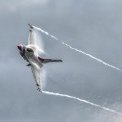
41sqn Tornado - One Giant leap!
RichG and one other reacted to Stokey Pete for a topic
May as well chuck an image in, from my days out (remember those) vault.2 points -
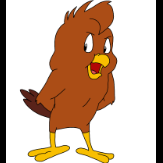
Delta Dart
Troy Molitor and one other reacted to Dandiego for a topic
Some progress. Here is my 3d printed cockpit shell and a pilot/seat combo meant for an F-105. The cockpit is rather tight and you can only see the top of the seat. I will change a few details of the seat to better represent an F-106. Here are some fuselage formers. The challenge is that each fuselage side is slightly different so that each side needs to done from scratch. 3d printed forward wheel well. Printing this part leads to strength, it is all one part, and squareness. I have added a hollow tube so that I can slide in the landing gear. Rear fuselage with tail, primed grey to protect my eyesight and my sanity. Which is seriously in question. Forward fuselage. The plastic shell is quite thin and will need serious re-enforcing as everything comes together. Fuel tanks puttied and sanded, ready for paint. Thats it. Dan2 points -
“When fear is new and the sight of death has novelty, men will buffet danger to test their strength. When the novelty has gone, replaced by confidence and determination, then operations become a challenge. Halfway through a tour, the end is still distant. Trip by trip the end is being overtaken but is still too uncertain to dwell upon. It is not until the remaining trips number only five, then four, then three, that their minds dare to compute the cold statistics of deliverance. With three more trips to fly, at three per cent losses, the chance is 108 to 9 of living. Then it is 108 to 6. And then it is the final deal: 108 to 3, good odds but the heart is beating faster and the hand that deals the cards is trembling. It is all or nothing for the final jackpot. Men pray for an easy target as their last. They beg the chance to get it over quickly. A final trip to Stettin would seem a cruel omen. Even as men’s minds pondered the end of a tour, so, now, were spirits bent upon the end of the war. To end a tour meant a six month reprieve; to end the war meant more than most of them had dared to think on more than lightly.” — 101 Nights by Ray Ollis https://a.co/15l4cfO I was able to finally carve a cabin air vent for the fuselage, after a few attempts to get something to match my reference photos: This is the last major fuselage modification I have to make (hopefully). In other news, I've been focused on the wing corrections: 1) the landing lights were located under the port wing, but HK has them molded under both; 2) the landing lights were concave lenses, but HK just has molded circles engraved; 3) the life raft hatch was located on the top of the starboard wing, but again HK has them molded on top of both. I took a cue from Ian and made a concoction of Tamiya Extra Thin Cement mixed with sprues from the kit to make a sprue filler. I've seen this technique before but as Ian observed, using matching plastic ensures it is compatible. I've been pleased with it so far, and it acts very similarly to Mr Surfacer but without the shrinkage (always a good thing ). I used this to fill the extraneous lenses and hatch. The filler discolored the plastic, but that is from the Tamiya cement. It fills and sands just fine. To make the concave lenses I VERY carefully used a Dremel with a rounded sanding tip, then again used the thin Tamiya filler to even out imperfections. Finally, I added the wing tips, and as I've read elsewhere the fit is suboptimal. Fortunately most of the misalignment is under the wings, and while the fit above and below is gap free, the wing tip surfaces are either above or below the matching surface. I've sanded everything to shape, and still need to restore panel lines and rivets. Until next time! Cheers, Tom2 points

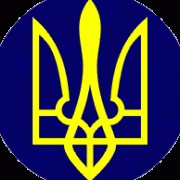
.thumb.jpg.5da8bff9741de420eb2e87addd8f2cf6.jpg)




